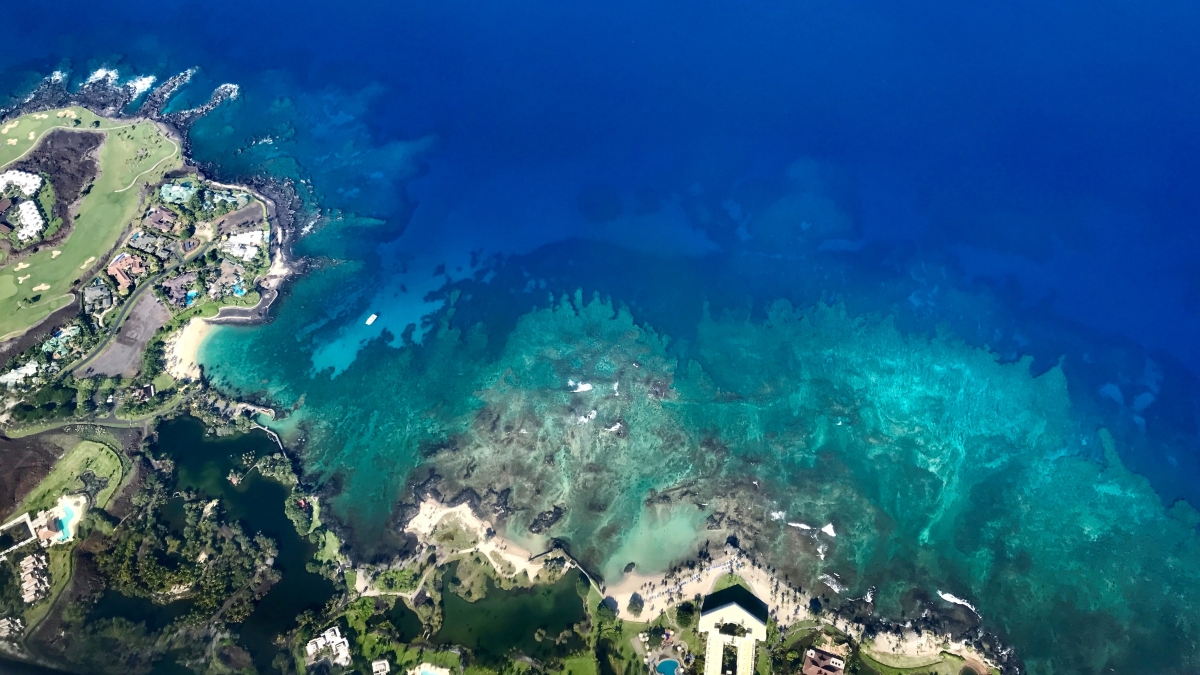New study shows policies designed for land use can also protect coral reefs

Researchers pointed out pre-existing policies that could assist in coral reef preservation. Photo courtesy ASU Global Airborne Observatory
Earth’s coral reef ecosystems continue to be exposed to human stressors such as overfishing and pollution, placing these habitats at greater risk of extinction. Arizona State University researchers are finding actionable pathways to protect coral reefs in an unexpected place: existing policy focusing on land.
“Untapped policy avenues to protect coral reef ecosystems,” a paper published Dec. 2 in Proceedings of the National Academy of Sciences (PNAS), explores how the use of current legal policies and procedures aimed at drinking water, freshwater and emergency management could preserve coral reefs. The paper was written in collaboration with the University of Hawaiʻi at Hilo.
“There are very immediate ways that existing laws can be applied to coral reefs, and that often isn’t happening,” said Rachel Carlson, lead author of the paper and affiliate scientist with the ASU Center for Global Discovery and Conservation Science in the Julie Ann Wrigley Global Futures Laboratory. “This paper was published in part to increase understanding of how laws that are mainly focused on the land can work to protect coral reefs in the future.”
Carlson knows firsthand how long it can take to enact environmental laws. As a previous employee of the U.S. Environmental Protection Agency in Washington, D.C., she worked on a variety of freshwater laws. When she transitioned from land conservation to coral reef research, however, she found that implementing policy she had worked on seemed to stay exclusively on land.
Greg Asner, director of ASU's Center for Global Discovery and Conservation Science and senior author of the article, said stronger communication could improve implementation of existing policy in reef protection.
“There is a huge gap between coral reef scientists and conservationists and the entire land-based policy sector,” Asner said. “This gap exists even in places where land directly touches the ocean.”
He said the Clean Water Act is a good example of how current policy is underutilized. In one possible scenario highlighted in the paper, states across the country could classify waterways with the “designated use” of supporting coral reefs under the Clean Water Act. This would allow water quality goals to be “directly tailored to the biological thresholds of corals,” according to the paper.
The researchers point directly at the Clean Water Act and Safe Drinking Water Act as examples of existing policies that could be applied in various ways for coral protection. Other existing programs in the U.S. that could be used to protect coral reefs are the Federal Emergency Management Administration’s flood insurance and restoration programs and nonpoint source management programs.
While the article highlights U.S. policies, Carlson said it also includes many global examples, giving the article an international audience. She hopes the paper urges coral conservationists across the globe to leverage existing policy where appropriate to ensure coral reef futures.
“I think coral reef conservation is seen sometimes as something that belongs only in communities that have reefs, but it really does touch us all,” she said.
Carlson said significant biomedical research has been done on the backs of coral reef ecosystems, and a large portion of global food security, especially in marginalized countries, rely on these ecosystems. According to the National Oceanic and Atmospheric Administration, about 25% of the ocean’s fish depend on healthy coral reefs.
“Even though climate change is happening, local actions can dramatically affect coral resilience,” Carlson said. “If we can act in ways to minimize local impacts on reefs, such as decreasing pollution through some of these existing policies, we can have an impact on how the corals can respond to these global issues.”
More Science and technology

ASU professor honored with prestigious award for being a cybersecurity trailblazer
At first, he thought it was a drill.On Sept. 11, 2001, Gail-Joon Ahn sat in a conference room in Fort Meade, Maryland.…

Training stellar students to secure semiconductors
In the wetlands of King’s Bay, Georgia, the sail of a nuclear-powered Trident II Submarine laden with sophisticated computer…

ASU startup Crystal Sonic wins Natcast pitch competition
Crystal Sonic, an Arizona State University startup, won first place and $25,000 at the 2024 Natcast Startup Pitch Competition at…